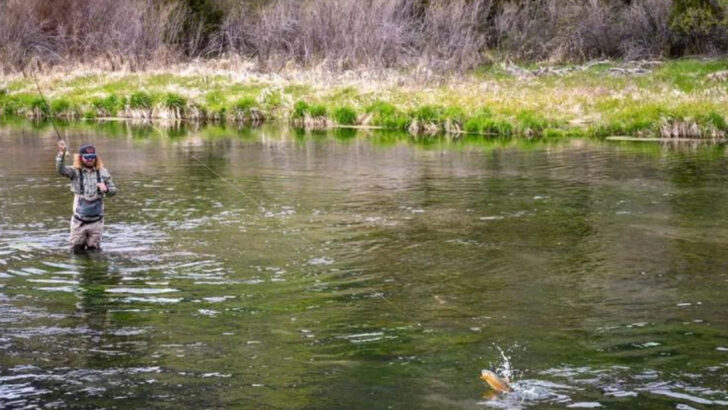Clear water makes everything harder. The trout see you. The bugs see you. Even your lies about “the one that got away” feel exposed.
This isn’t lazy river fishing where you can toss anything shiny and hope for the best. In clear water, trout get picky. They inspect, hesitate, vanish. Blink and they’re gone.
That’s why you need a strategy—scratch that—you need ten. The kind that actually work when the water’s see-through and the fish are spooky.
And while we’re at it, let’s toss out the duds. You don’t need to waste time on techniques that make more ripples than results. Let’s get sharp, sneaky, and just a little obsessive. The trout demand it.
Use Light Line

In clear water, trout are especially wary of thick, visible lines. Using a light line, preferably 2-4 lb test, can significantly increase your chances of a bite. The thinner line is less visible to fish, allowing your bait to appear more natural. Moreover, a light line enables you to cast further, reaching those elusive spots where trout often hide.
While handling a light line requires finesse to avoid breakage, the rewards are substantial. It offers a stealthy approach, making it a favored choice among seasoned anglers.
Patience and precision are key when using this technique.
Natural Bait Selection
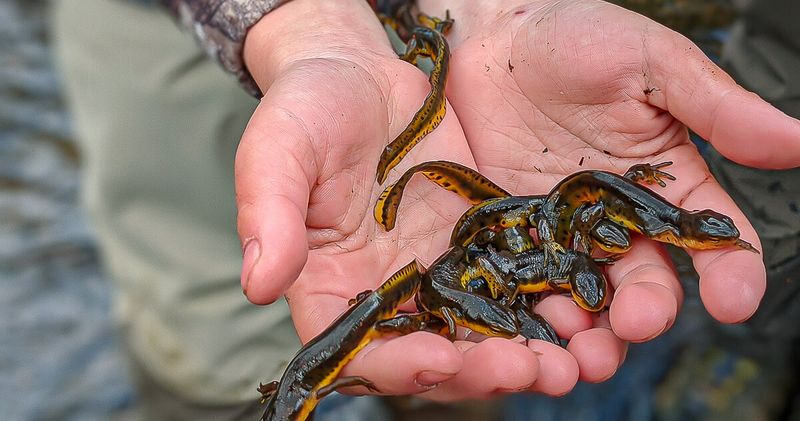
Trout in clear water are accustomed to seeing their natural prey, so choosing baits that resemble these familiar foods is crucial. Worms, insects, and small fish often work well. Using natural bait not only mimics what trout are used to but also attracts them with enticing scents.
An added advantage is that natural baits can be found in and around fishing spots, making it a convenient choice. Many anglers have stories of success when opting for what trout instinctively recognize.
Experimenting with different natural baits can lead to surprising results.
Stealthy Approach
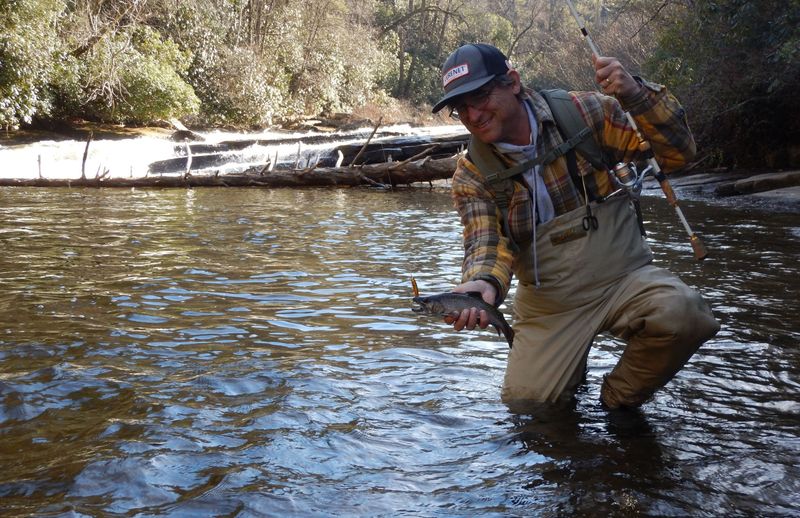
The art of stealth is vital when fishing in clear water. Trout are sensitive to movement and vibrations, so a cautious approach can make all the difference. Wearing camouflage clothing helps blend with the surroundings, and moving slowly reduces disturbance.
Positioning yourself downstream allows you to avoid alerting fish to your presence.
This technique may seem tedious, but many anglers swear by its effectiveness. Witnessing a trout take the bait after such meticulous preparation is a rewarding experience.
Patience and a stealthy demeanor are your allies here.
Sight Fishing
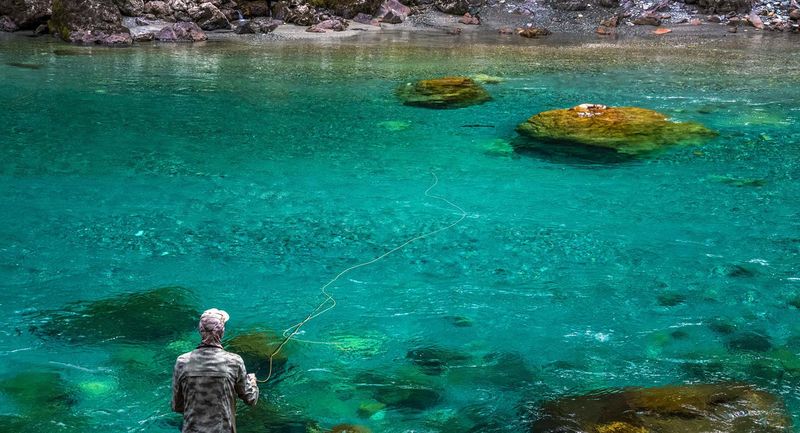
In clear water, sight fishing offers a unique thrill. With polarized sunglasses, an angler can spot trout beneath the surface, making targeted casts. This technique requires keen observation and quick reflexes, as trout can be elusive.
It’s an interactive way to fish, where every movement counts. Observing trout reactions to different lures provides insights into their behavior.
While not always feasible in murky waters, clear conditions make sight fishing a favorite among enthusiasts. The satisfaction of seeing a trout strike is unmatched.
Embrace the challenge and sharpen your skills.
Fly Fishing
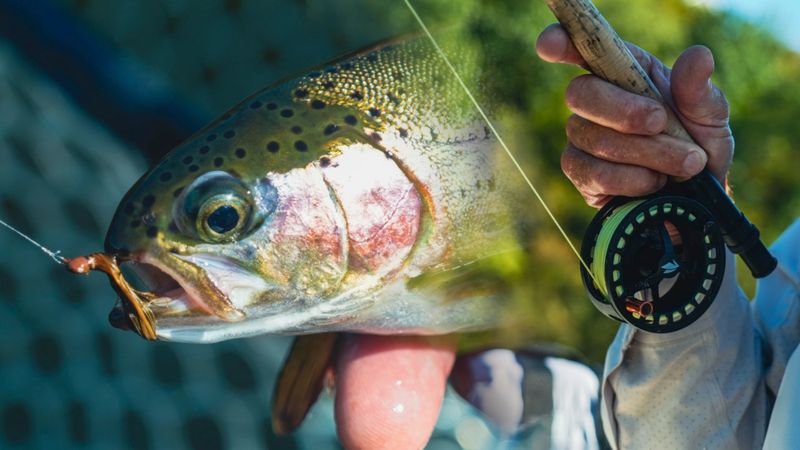
Fly fishing in clear water is an art form that combines skill and patience. The fly, often hand-tied to resemble insects, dances on the water’s surface, enticing trout. This method requires practice to perfect the cast and presentation.
The clear water amplifies the visual spectacle, allowing you to see the trout’s reaction. Enthusiasts appreciate the technique for its elegance and the connection it fosters with nature.
Fly fishing offers a meditative experience, where each cast becomes a dance on the water, creating memories that linger.
Mastery of this art is a rewarding pursuit.
Match the Hatch
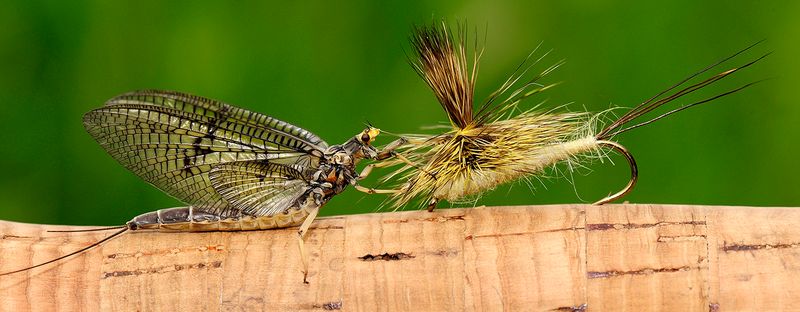
Matching the hatch involves choosing lures or flies that mimic the insects currently hatching in the area. Clear water provides a great opportunity to observe what trout are feeding on. By selecting the right pattern, you align your bait with the trout’s natural diet.
This technique requires awareness and adaptability, as hatches can change throughout the day. Success comes from keen observation and a willingness to adjust.
Anglers who master this skill often find themselves catching more trout, as they present what the fish are actively seeking.
An insightful approach to fishing.
Longer Leader
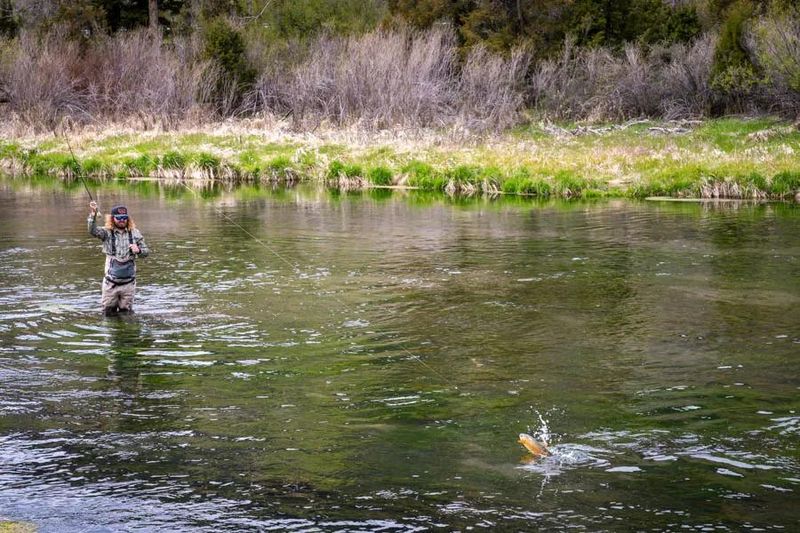
Using a longer leader in clear water is a strategic choice. It distances the lure from the thick fly line, minimizing disturbance and presenting a more natural appearance to wary trout. A leader of 9 to 12 feet is often recommended.
This adjustment may seem minor, but its impact is significant. By reducing the visibility of the line, you increase the chances of enticing a bite.
Many anglers find success with this technique, appreciating the subtle advantage it offers.
A longer leader can be the difference between a good day and a great one.
Varying Retrieval Speed
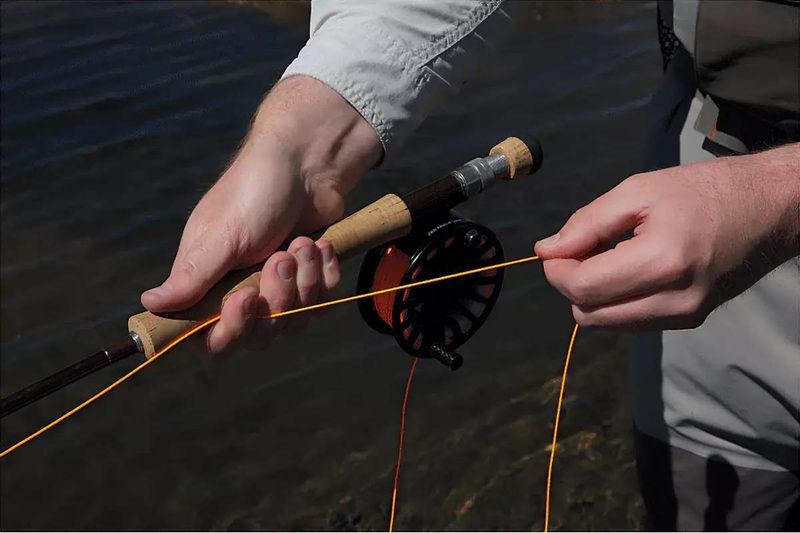
Adjusting the retrieval speed can make your lure more appealing to trout in clear water. Start with a slow, steady retrieve and observe the fish’s reaction. If there’s no interest, gradually increase the speed or change the rhythm.
This technique allows for exploration and creativity, as you mimic different prey movements. Trout may respond to one style more than another, depending on their mood or environmental factors.
It’s a dynamic approach that keeps the angler engaged, offering surprises along the way.
Experiment with retrieval to unlock new possibilities.
Casting Upstream
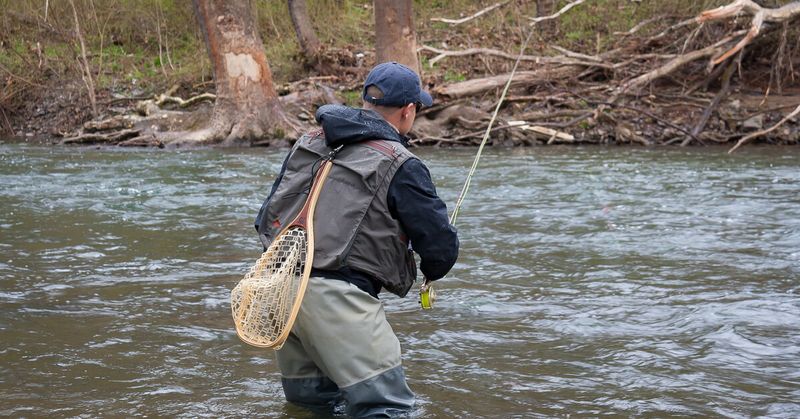
Casting upstream in clear water is a smart tactic. As the lure drifts naturally with the current, it mimics the movement of real prey. Trout often face upstream, waiting for food to come to them, so this method aligns with their natural feeding behavior.
While casting upstream requires accuracy and timing, the rewards are plentiful. It offers a seamless presentation, making your bait more enticing.
This technique has been praised by anglers who value authenticity in their approach.
Casting upstream might just land you the catch of the day.
Understanding Water Temperature
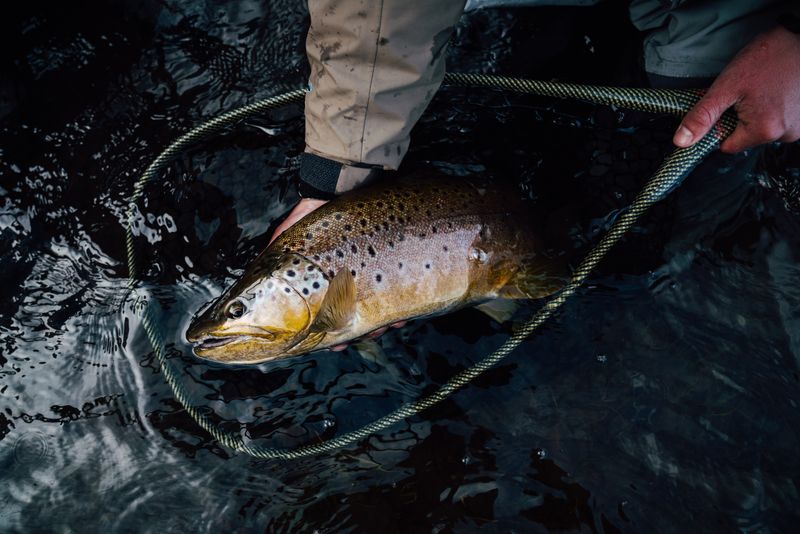
Water temperature is a crucial factor in trout fishing. Trout prefer cooler temperatures, often found in deeper sections of clear water. Knowing the temperature helps you determine the best fishing spots and times.
Using a thermometer, you can identify areas where trout are likely to congregate. This technique requires patience and observation, as conditions change with weather and time of day.
Anglers who understand the nuances of water temperature often enjoy greater success.
It’s a scientific approach that adds depth to your fishing experience.
Skipping: Heavy Lures
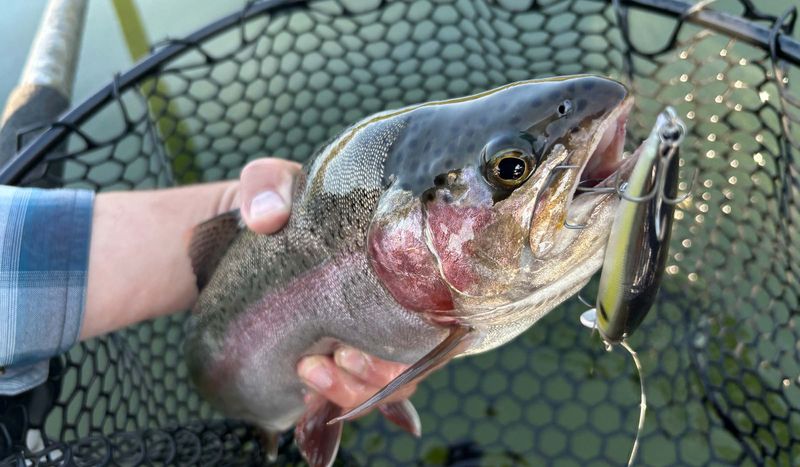
In clear water, heavy lures can be a hindrance rather than a help. They create more splash upon impact, often startling the fish you’re trying to catch. Lighter lures offer a more delicate presentation, which is key in clear conditions.
Anglers have noted that lighter tackle tends to yield better results in these environments. While heavy lures have their place in murkier waters, they’re best skipped here.
Choosing the right tackle is essential, and understanding what to leave behind can be just as important as knowing what to bring along.
Skipping: Bright Colored Lures
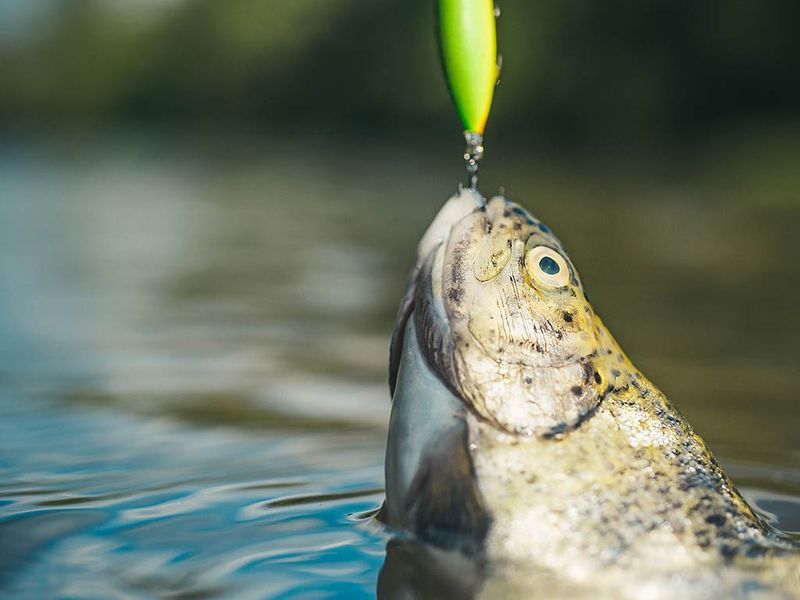
Bright lures might seem attractive, but in clear water, they often appear unnatural to trout. Such lures can deter fish instead of attracting them. Subtle, natural colors blend more seamlessly with the environment.
Experienced anglers know that less is often more when it comes to lure visibility in transparent waters. While bright colors might work in other conditions, they are less effective here.
Opting for subdued hues can enhance your chances of a successful catch.
It’s a choice that reflects a deeper understanding of trout behavior.
Skipping: Loud Movements

Loud movements are a definite skip when fishing in clear water. Noise and commotion can easily scare trout away, making stealth a priority. Quiet, deliberate actions are more beneficial.
Many seasoned anglers adopt a minimalist approach, reducing unnecessary movement and focusing on subtlety. The clear water demands a gentle touch, where less disturbance equates to more success.
It’s a lesson in restraint and patience.
Avoiding loud movements is a principle embraced by those who understand the delicacy required in these conditions.
Skipping: Constant Casting
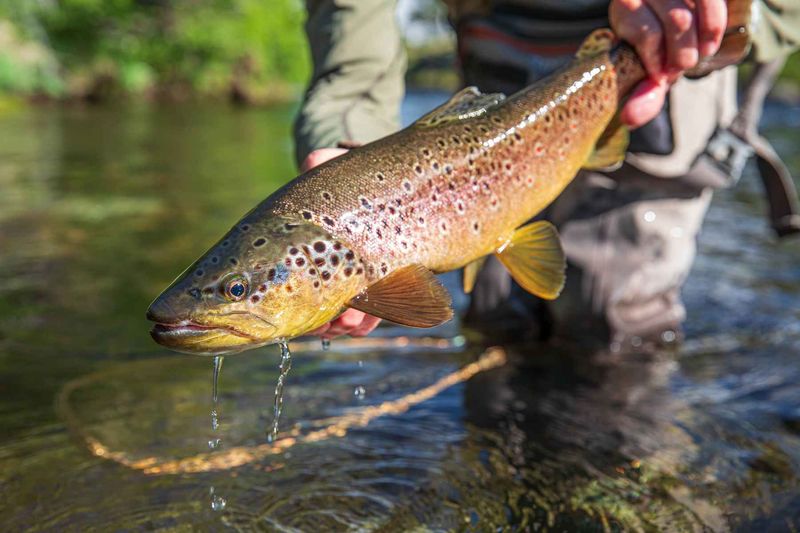
In clear water, constant casting can do more harm than good. Repeatedly casting your line creates disturbances that alert trout to your presence. Instead, patience and strategically timed casts prove more effective.
Anglers often find success by observing the water and waiting for the right moment. This approach allows you to remain unnoticed, preserving the natural setting.
It’s a technique that emphasizes quality over quantity, where thoughtful actions yield results.
Skipping constant casting aligns with a mindful fishing philosophy.
Skipping: Artificial Scents

Artificial scents may not be necessary when fishing for trout in clear water. In fact, they can sometimes deter fish, as the strong odors might seem unnatural. Natural baits often provide enough scent to attract trout without overwhelming them.
Experienced anglers often avoid artificial scents, relying instead on the innate appeal of natural options. This choice reflects a commitment to authenticity and simplicity.
In the clear waters, where trout are cautious, subtlety wins the day.
Skipping artificial scents is a nod to the elegance of traditional fishing methods.

